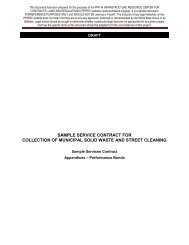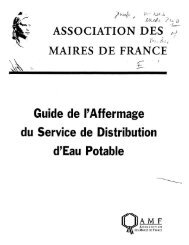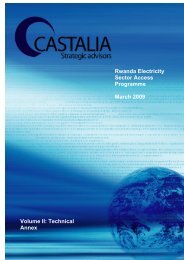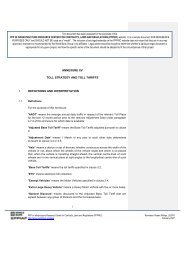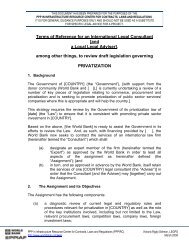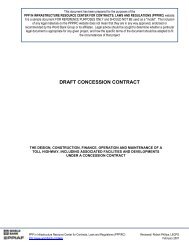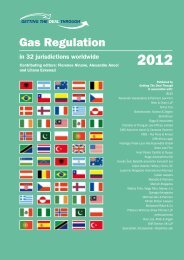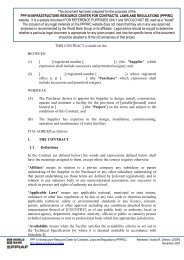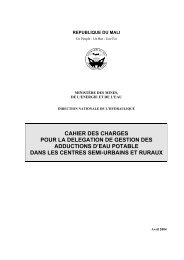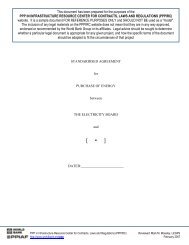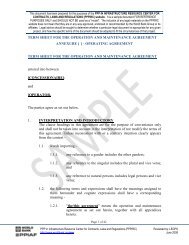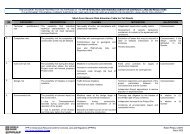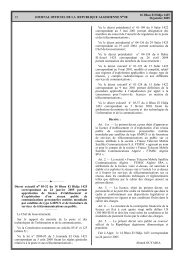Volume I: Investment Prospectus Rwanda Electricity Sector Access ...
Volume I: Investment Prospectus Rwanda Electricity Sector Access ...
Volume I: Investment Prospectus Rwanda Electricity Sector Access ...
- No tags were found...
You also want an ePaper? Increase the reach of your titles
YUMPU automatically turns print PDFs into web optimized ePapers that Google loves.
Table 5.4: Estimated System Operating Costs (2009–2013) (USD million)Programme Component 2009 2010 2011 2012 2013Current connections– Generation 24.7 29.5 24.8 25.3 25.2– Transmission and Distribution 4.3 4.0 3.6 3.3 3.0– Other (staff, administration, interest) 1 5.1 5.3 5.5 5.7 5.8New grid connections– Generation 2.0 8.0 12.8 18.1 24.3– Transmission and Distribution 0.3 0.9 1.8 2.6 3.7– Other (staff and administration) 0.7 1.8 2.8 3.7 4.7Off-grid connections 0.7 1.5 2.8 4.8 1.4Operating contingencies 4.5 5.1 4.3 3.8 3.4Total 42.3 56.1 58.4 67.4 71.5The average cost of supplying existing customers in <strong>Rwanda</strong> is projected to be around 8–10c/kWh, while new connections made under the access programme have a higher averagesupply cost of between 10–13c/kWh. This is because new connections are assumed to besupplied by higher-cost plants. The overall average supply cost is projected to be around9c/kWh. These estimated per unit supply costs are lower than those recently incurred in<strong>Rwanda</strong> because expensive rental units have been used in the past four years. Forcomparison, the average cost of supply in 2007 is estimated to be 17c/kWh. 28Funding needs—capital investmentsThe Government, development partners and private investors have proposed a number ofcapital investments in new generation and transmission that must be funded, in addition tothe access programme. It is important to account for these investments in planning theaccess programme because the Government and development partners have constraints onthe amount of funding that can be committed to the energy sector.Estimates of the capital costs accounted for in this <strong>Prospectus</strong> are shown in Table 5.5(below). Because most new generation capacity is treated as being repaid under powerpurchase agreements, the capital costs of constructing most new generation plants are notshown in Table 5.5 (instead payments under power purchase agreements are assumed to besufficient to cover operating expenses and repay capital costs). The capital cost for newgeneration shown in Table 5.5 is for rehabilitating existing micro-hydro sites and conductingfurther hydro studies.28 Electrogaz Annual Report, 2007.50



